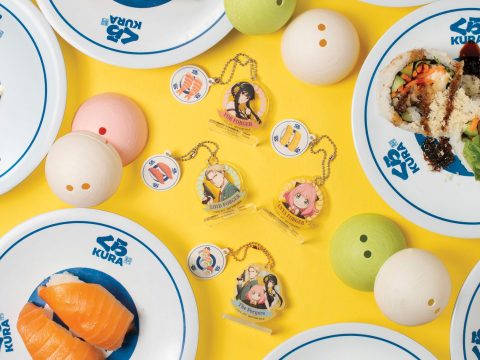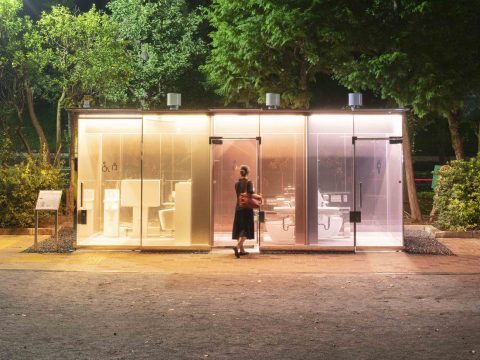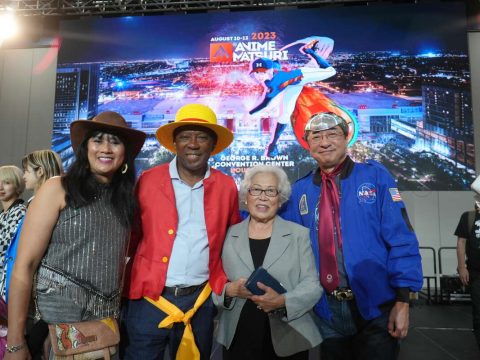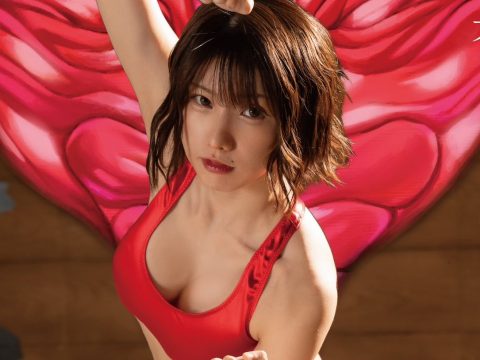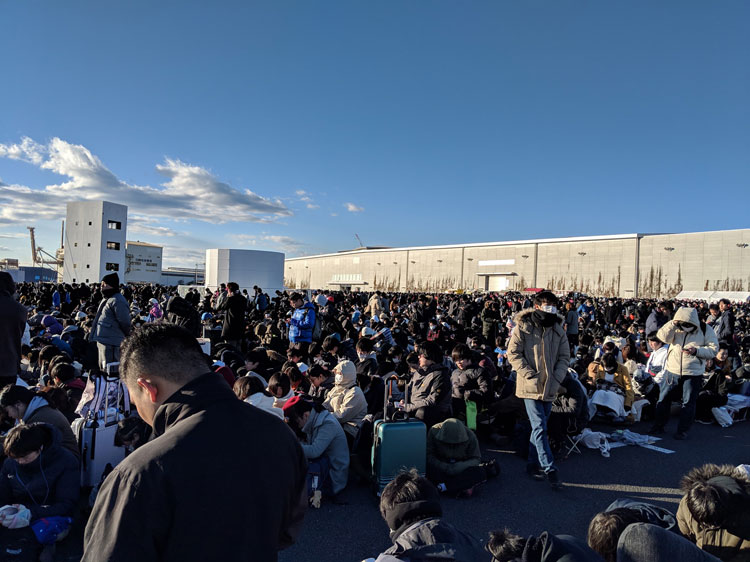 Two hundred thousand.
Two hundred thousand.
That’s roughly how many people crowded into the Tokyo Big Sight each day for three days late last year for the largest fan convention in the world, Comic Market, a.k.a. Comiket. It’s a number that’s hard to really visualize. By comparison, the largest anime convention in the US, Anime Expo, packs the Los Angeles Convention Center near to bursting with 110,000 people over the course of four days. Comiket has nearly double that in one, and over the course of all three days around half a million people pass through its halls.
What were all of these people there to do? Buy comics, of course! Comiket is a literal comic market, with massive halls filled with tables upon tables of self-published comics (“doujinshi,” as the Japanese call them) from small groups of artists called “circles.” Most of the comics are derivative works based on manga, anime, or games, making Comiket ground zero for otaku culture in Japan. There’s nowhere better to get a read on what’s hot right now in Japanese nerd media.
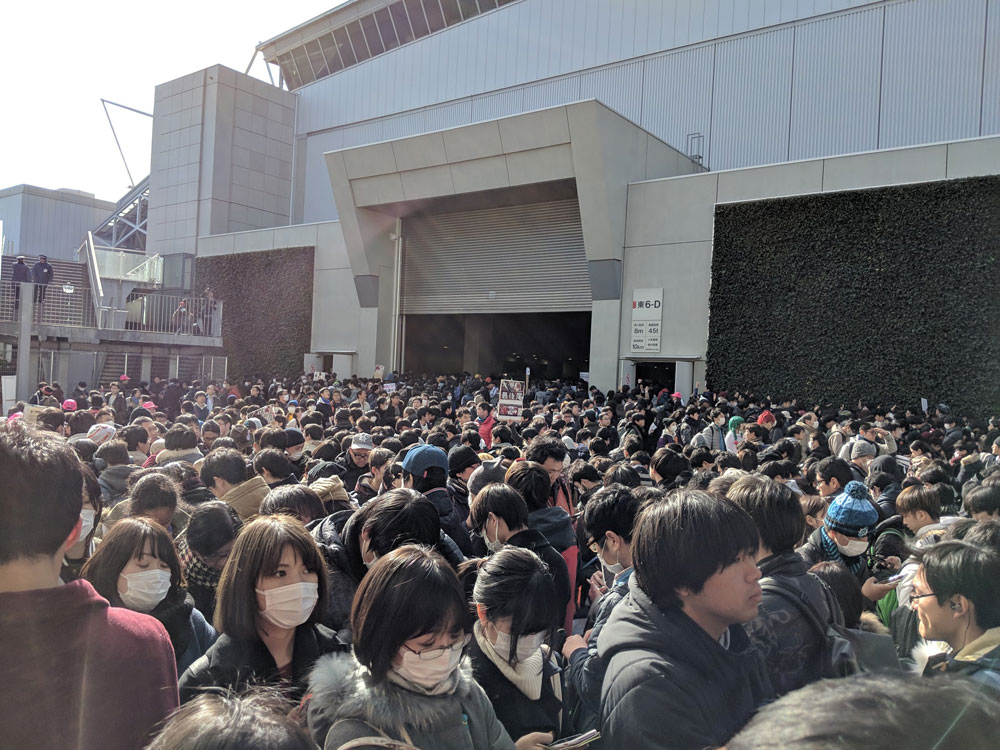 Unsurprisingly, what’s hot tends to be porn. Specifically porn of your favorite anime characters doing the deed with virtually any character you can imagine in virtually any position you can imagine (and some you can’t). Comiket is the real-life embodiment of the Internet’s infamous Rule 34: If it exists, there’s porn of it. In fact, if there’s porn of it, there’s a good chance that it came from Comiket.
Unsurprisingly, what’s hot tends to be porn. Specifically porn of your favorite anime characters doing the deed with virtually any character you can imagine in virtually any position you can imagine (and some you can’t). Comiket is the real-life embodiment of the Internet’s infamous Rule 34: If it exists, there’s porn of it. In fact, if there’s porn of it, there’s a good chance that it came from Comiket.
This year I attended Comiket for the first time, and showed up equal parts excited and nervous. I was looking forward to crawling the halls to find weird indie manga and books by my favorite animators (all in Japanese, of course), but was not so enthusiastic about wading through an ocean of porn.
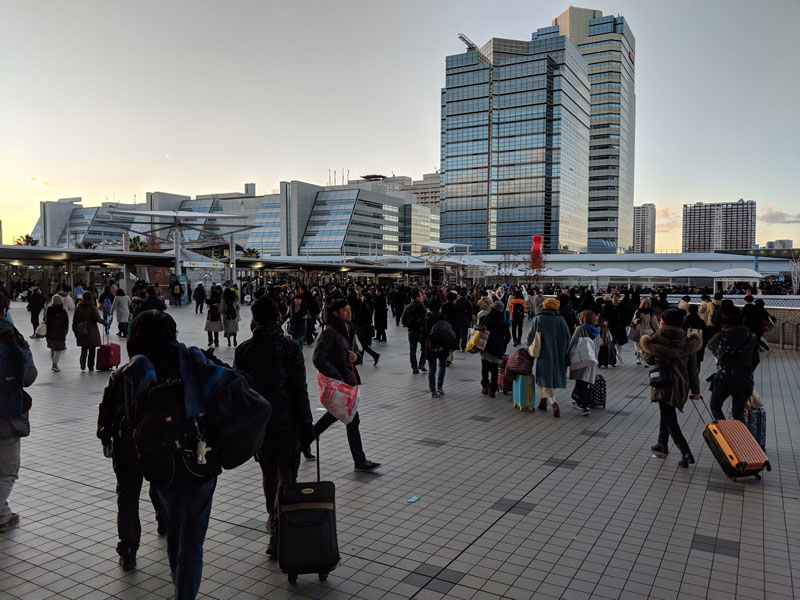 But before I could even begin to sail those seas, I had to get into the convention center. Half of the adventure of Comiket is getting there; many attendees line up hours before doors open at 10am. If you’re heading in on the train, as I was, you’ll see the early morning commuter crowds slowly thin out as they’re replaced by hurried otaku, converging like locusts on the Tokyo Big Sight. Except these locusts are equipped with roller suitcases, the preferred vehicle for the mountains of books that attendees pick up at the convention. The suitcases are a convenient way to carry your purchases, but it also helps that they’re a great place to hide your smut from the eyes of those pesky normies on the train ride home.
But before I could even begin to sail those seas, I had to get into the convention center. Half of the adventure of Comiket is getting there; many attendees line up hours before doors open at 10am. If you’re heading in on the train, as I was, you’ll see the early morning commuter crowds slowly thin out as they’re replaced by hurried otaku, converging like locusts on the Tokyo Big Sight. Except these locusts are equipped with roller suitcases, the preferred vehicle for the mountains of books that attendees pick up at the convention. The suitcases are a convenient way to carry your purchases, but it also helps that they’re a great place to hide your smut from the eyes of those pesky normies on the train ride home.
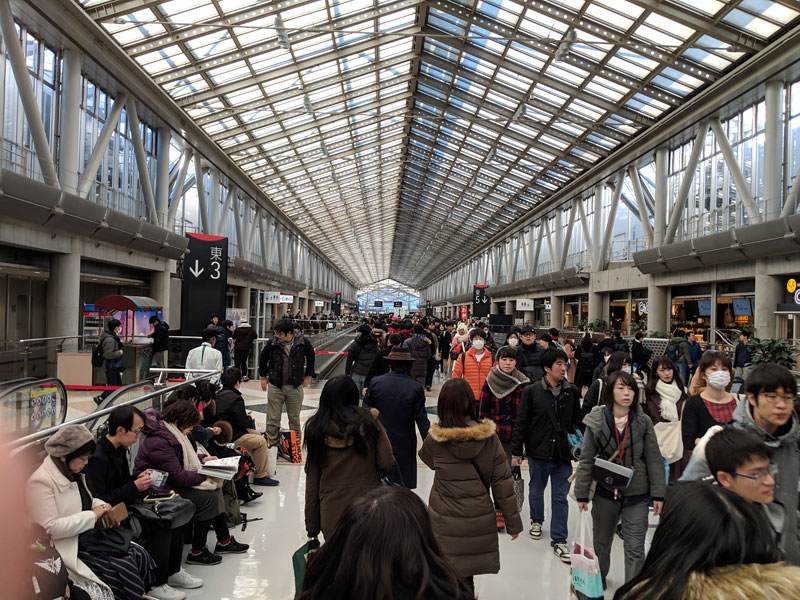
After a lovely train ride across Tokyo Bay to the man-made island of Odaiba, I arrived at Big Sight and got on line in the cold, my hastily acquired convenience store breakfast in hand. Three hours in the pre-dawn cold might seem miserable, and it largely is, but I was able to take solace in the fact that I was here for Winter Comiket. The convention takes place twice a year, and the summer version is in the middle of August, when Japan is at its hottest and most humid. As they say, at least in the winter you can always put on more clothes. Plus, there really is something magical about the very Japanese efficiency with which Comiket staff guide attendees through the line. Despite being routed all the way around the convention center and through multiple parking lots, the entire process was remarkably quiet, orderly, and stress-free. Even the booths themselves are well organized — each day tends to focus on specific subjects, like Boys Love or idols or mecha, and circles for related series can be easily found next to each other.
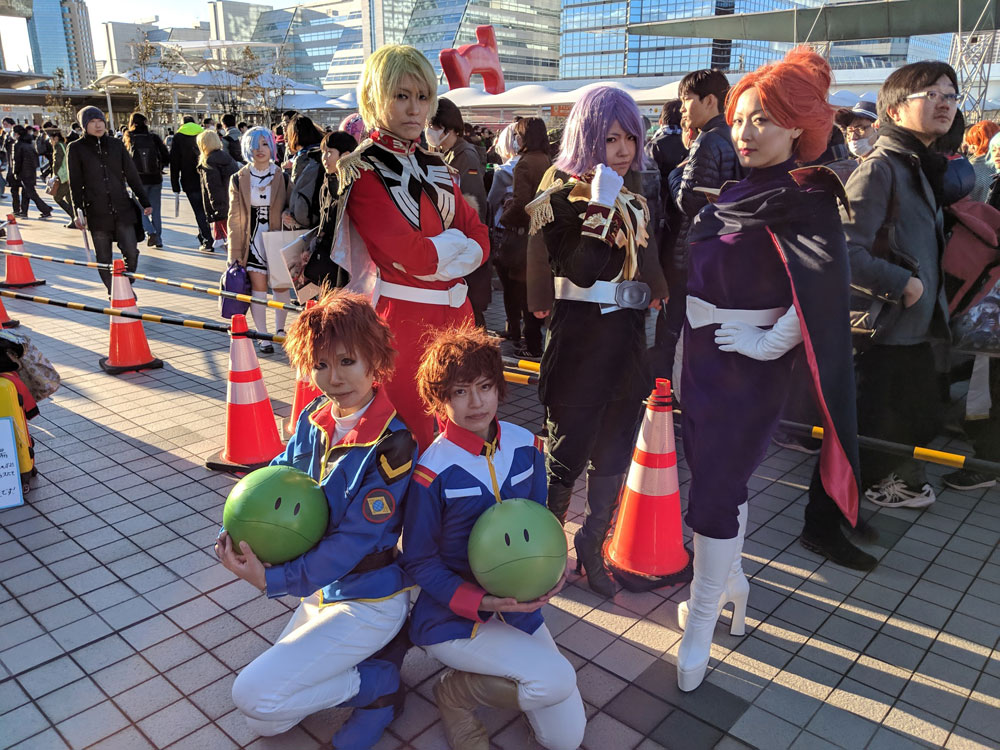 Really, though, if you’re a big fan of lines, Comiket is the convention for you. Once I got inside the halls, it was time for more lining up, this time for specific circles. The bulk of the circles are small-scale fan operations (the Comiket organizing committee reports that 70% of circles lose money and only 15% break even), but they aren’t the big draw. Some Comiket circles are run by popular porn artists or professional animators working under an alias, and these circles tend to get overflow lines that take attendees back outside into the loading dock areas. North American anime fans love to complain about “Line Con,” but you really don’t know the half of it until you’ve waited outside in the cold for four hours straight to buy Fate/Grand Order porn for your friend.
Really, though, if you’re a big fan of lines, Comiket is the convention for you. Once I got inside the halls, it was time for more lining up, this time for specific circles. The bulk of the circles are small-scale fan operations (the Comiket organizing committee reports that 70% of circles lose money and only 15% break even), but they aren’t the big draw. Some Comiket circles are run by popular porn artists or professional animators working under an alias, and these circles tend to get overflow lines that take attendees back outside into the loading dock areas. North American anime fans love to complain about “Line Con,” but you really don’t know the half of it until you’ve waited outside in the cold for four hours straight to buy Fate/Grand Order porn for your friend.
Fate was far and away the most popular franchise at the convention. I saw quite a lot of idol artwork as well, including the perennial Idolmasters and Love Lives. The sword boys of Touken Ranbu were particularly popular on the first day, when many of the female circles set up shop. And that’s to say nothing of the many characters and franchises I didn’t even recognize! I found lots of unexpected circles as well, including a row of circles run by Giant Robo fangirls, an Osamu Tezuka fan artist who came dressed as The God of Manga himself, and one brave circle making Boss Baby comics.
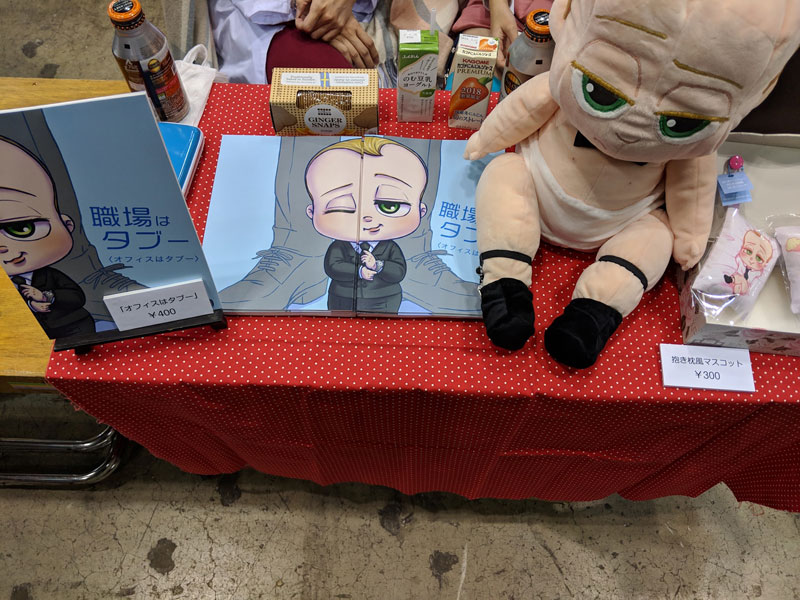 The hours of lining up might make it sound like Comiket is a huge waste of time. Quite the opposite, in fact. There’s a reason why half a million people wait on lines in the blistering heat and freezing cold twice a year to step foot inside these halls. Comiket is a vibrant celebration of creativity and individuality, like 100 anime con artist alleys merged with a giant flea market. Sure, there’s more porn than you could read in a lifetime, but there’s also hilarious parody fan art, indie games, autobiographical comics, homemade jewelry, and books on computer programming. The cosplay areas outside showcase intricately made cosplays of popular characters alongside weird joke costumes. All of it produced by creators who sink their own money and time into these projects because they love to make stuff and share it with others. Sure, the industry has worked their way in since Comiket started in 1975, but they know their place within this fan-run celebration, and it’s “cordoned off in a separate hall from all the doujin circles.”
The hours of lining up might make it sound like Comiket is a huge waste of time. Quite the opposite, in fact. There’s a reason why half a million people wait on lines in the blistering heat and freezing cold twice a year to step foot inside these halls. Comiket is a vibrant celebration of creativity and individuality, like 100 anime con artist alleys merged with a giant flea market. Sure, there’s more porn than you could read in a lifetime, but there’s also hilarious parody fan art, indie games, autobiographical comics, homemade jewelry, and books on computer programming. The cosplay areas outside showcase intricately made cosplays of popular characters alongside weird joke costumes. All of it produced by creators who sink their own money and time into these projects because they love to make stuff and share it with others. Sure, the industry has worked their way in since Comiket started in 1975, but they know their place within this fan-run celebration, and it’s “cordoned off in a separate hall from all the doujin circles.”
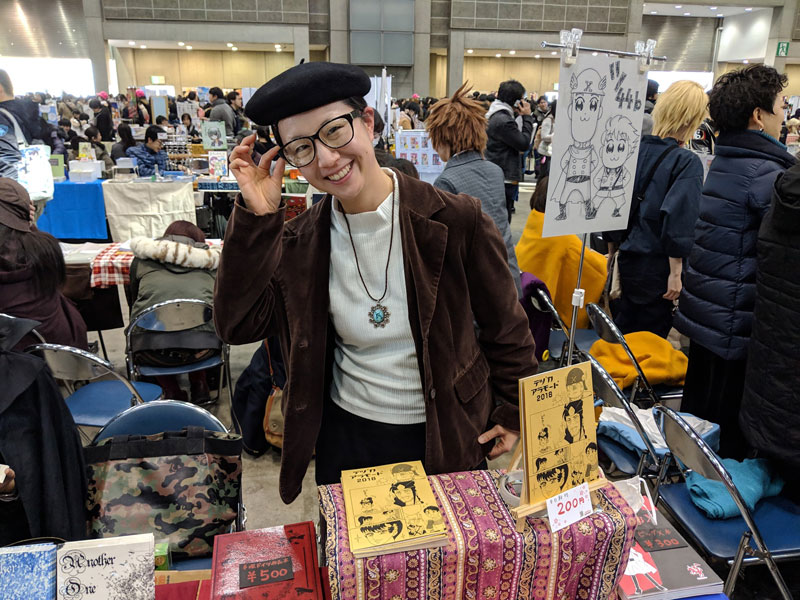 Even the organizers do it for the love of it: the event is put on by a non-profit organization and a volunteer staff, and while the catalog costs 2500¥ (about $25), attendance is free (at least until 2020, when they’ll begin charging due to scheduling complications with the Olympics).
Even the organizers do it for the love of it: the event is put on by a non-profit organization and a volunteer staff, and while the catalog costs 2500¥ (about $25), attendance is free (at least until 2020, when they’ll begin charging due to scheduling complications with the Olympics).
In addition to the books from my favorite animators and illustrators, I left the Tokyo Big Sight with a bunch of stuff I had found while simply wandering the aisles. To me, it’s that unguided exploration and those serendipitous opportunities to connect with fellow fans that make Comiket really magical.
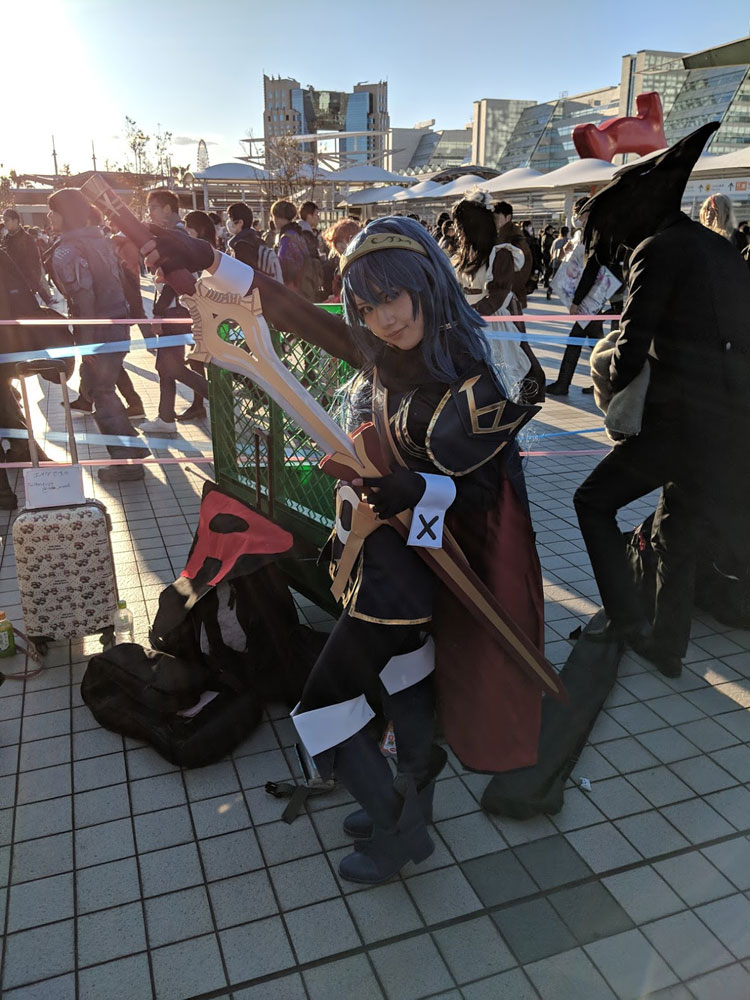 Evan Minto is the Editor-in-Chief of Ani-Gamers and writes about anime and manga for Otaku USA, Crunchyroll, Anime News Network, and IGN. He recently discussed Comiket with co-host (and fellow Otaku USA contributor) David Estrella on their podcast.
Evan Minto is the Editor-in-Chief of Ani-Gamers and writes about anime and manga for Otaku USA, Crunchyroll, Anime News Network, and IGN. He recently discussed Comiket with co-host (and fellow Otaku USA contributor) David Estrella on their podcast.


